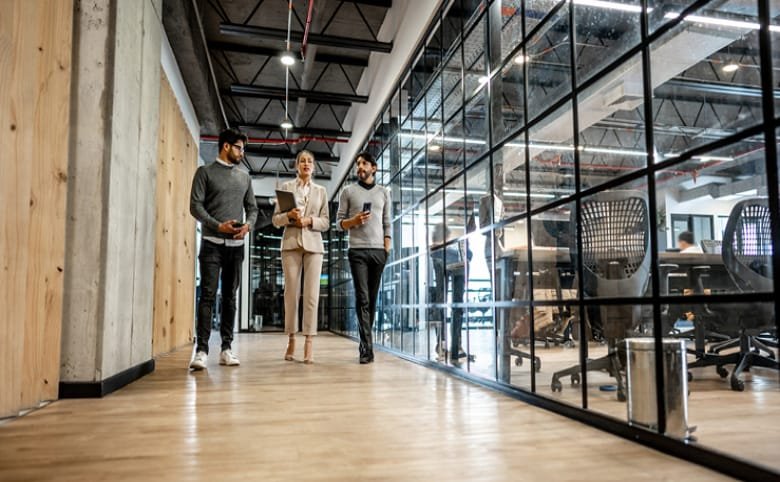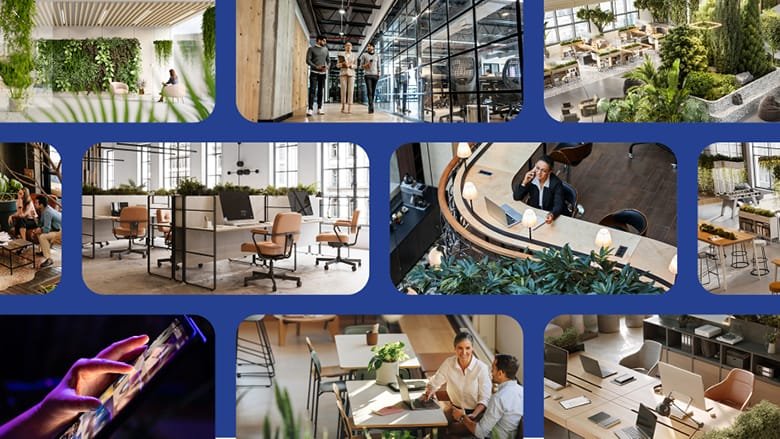
 DOWNLOAD REPORT
DOWNLOAD REPORT
Rising from the ranks of being merely a physical space for interaction to becoming a key driver of talent management, corporate culture, innovation and climate action, Corporate Real Estate (CRE) is now a powerful force shaping the way we work and interact.
As flex and hybrid work models gain popularity across Asia Pacific, the focus is on cost efficiency, technology, sustainability and employee experience. We believe companies that adopt an integrated approach will be able to drive performance and future-proof their real estate investments.
Our latest report Office 2025: Real estate strategies to accelerate performance serves as a guide on CRE strategies to engage, activate and accelerate business performance. It captures the four essential pillars of foundational CRE strategies, uncovering complexities and providing a roadmap for success. Below is a snapshot of the report.
Corporate Real Estate Strategies to Accelerate Performance
1. Optimising commercial outcomes

 Navigating market conditions to secure the best value for your workspace
Navigating market conditions to secure the best value for your workspace
Ownership versus leasing: Weighing the strategic real estate choices
The range of choices now available and the factors that need to be considered make leased versus owned space decision making far more complex and significant than they used to be.
Location strategy imperatives. Leveraging hybrid for optimum talent mix
The first step to making the office a talent hub hinges on identifying the right location. It is crucial to answer some key questions to set the most essential metrics in order.
Physical footprints optimisation: Best practices
When it comes to optimal footprint, we believe that the most critical factor is not just the physical space, but rather the people within it.
Flex office in 2024, Strategic roadmap for 2025 & beyond
Assess both current and future requirements and select flexible office solutions that offer scalability.
2. Driving digital innovations

 Digital innovations to transform the workplace for a competitive edge
Digital innovations to transform the workplace for a competitive edge
Data intelligence for effective decision making
Having data is a lot less important than knowing what to do with it. If you have the right data and know how to apply it in the right way, the impact on your real estate strategy can be transformational.
What the emergence of generative AI means for office occupiers
Generative AI can process and analyse the vast amounts of data produced by modern buildings, as well as make strategic recommendations and predictions.
3. Delivering a sustainable future

 Leading sustainability initiatives to create a more resilient and responsible workplace
Leading sustainability initiatives to create a more resilient and responsible workplace
Beyond glass towers: Sustainability imperatives driving architectural change
Today’s well-considered designs go beyond mere aesthetics; they must also be cost-effective, socially inclusive and environmentally beneficial.
Innovations with impact: Leveraging new materials, monitoring and measurement
Technology holds great promise for improving workplace sustainability, but the key is to focus on targeted solutions for your specific challenges rather than getting overwhelmed by the myriad options available.
4. Enhancing company culture

 Having a future-ready CRE strategy
Having a future-ready CRE strategy
Reimagining the workplace to reflect cultural change
Most organisations have a clear idea of their own cultural identity. This identity should be reflected in the physical space in which work takes place.
Making the physical office a platform for coaching and mentoring
Making the office a better platform for coaching and mentoring doesn’t necessarily require massive investments and is more a function of being strategic and considerate.
Fostering diversity and inclusion in the built environment
Diversity and inclusion is about creating a culture where respect and consideration for employees is reflected in the physical space they share.
Read the full report here.
Check out our insights on Unlocking tangible office real estate savings & Seizing the value creation opportunities in corporate real estate
Must read: AI in Corporate Real Estate


